Music, art help to deal with the violence in Rio slum
In a small and crudely painted green room called “the bunker,” 18-year-old Lucas dos Santos da Cruz and his friends go over rhymes in their heads.
Soon they will be competing in freestyle rap battles on a poorly illuminated square in the “City of God,” one of Rio de Janeiro’s most notorious and violent slums. For the young men, rap is a way to express frustration with the violence that permeates their daily lives.
“City of God is like a small Syria and there is imminent risk of death,” said Cruz, sporting dreadlocks. “What we do here is resistance.”
To see how residents were dealing with an increase in violence in Rio’s favelas, an Associated Press team spent eight days with two families in the City of God, which was made famous by the 2002 Oscar-nominated film by the same name. Just a few miles from the Olympic Park, where the 2016 Rio Games were held, the slum offers few government services and shootouts between police and heavily armed drug traffickers are common.
Text by Leo Correa and Yesica Fisch/AP:
Read More:
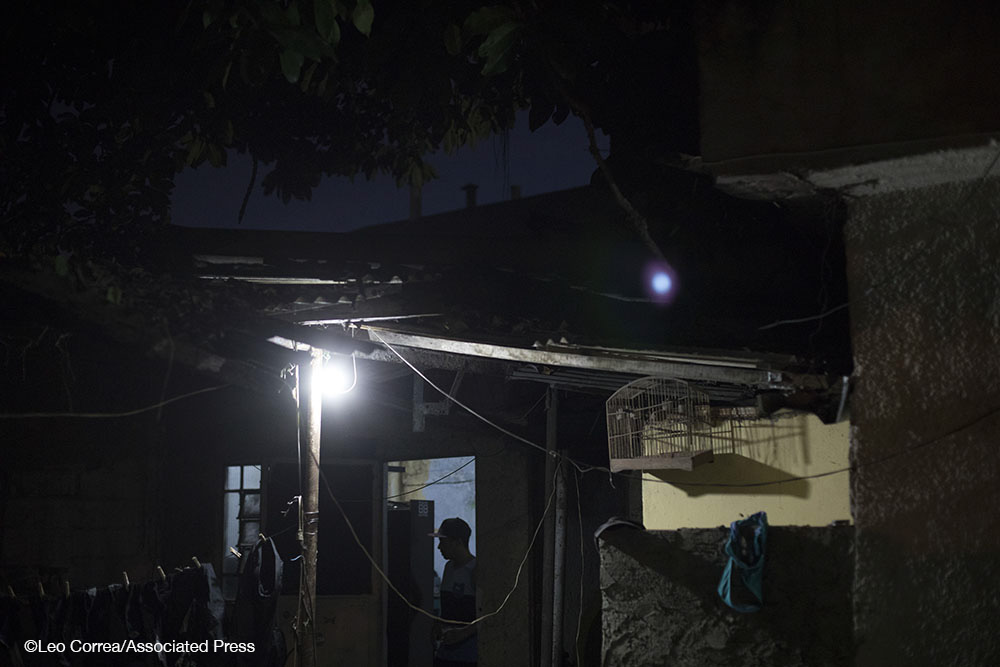
In this June 8, 2017 photo, Erik Franca, 25, stands on the entrance of the improvised room that he and his friends gather to produce their music in the City of God slum in Rio de Janeiro, Brazil. In a small and crudely green painted room that they call bunker, The young men set their strategy based in music, RAP and cultural resistance through the Hip-Hop. (AP Photo/Leo Correa)
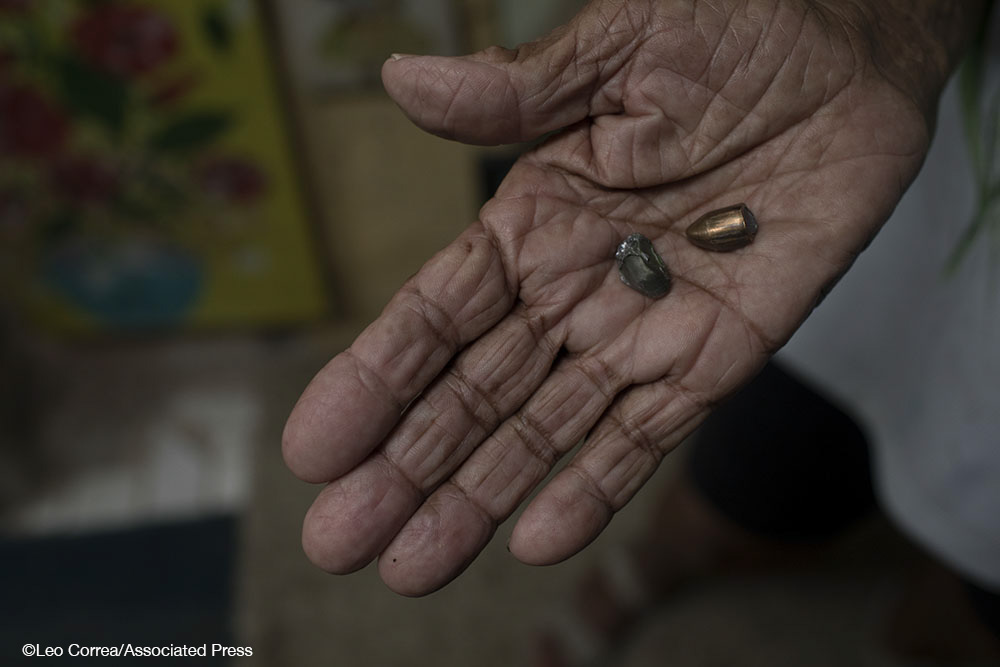
In this June 8, 2017 photo, the artist Anayde dos Santos Muniz, 84, shows two bullets that some days ago hit her house next to her bed in the City of God slum in Rio de Janeiro, Brazil. Muniz is a multi platform artist, without primary education completed, that sings, paints and writes poems and songs.(AP Photo/Leo Correa)
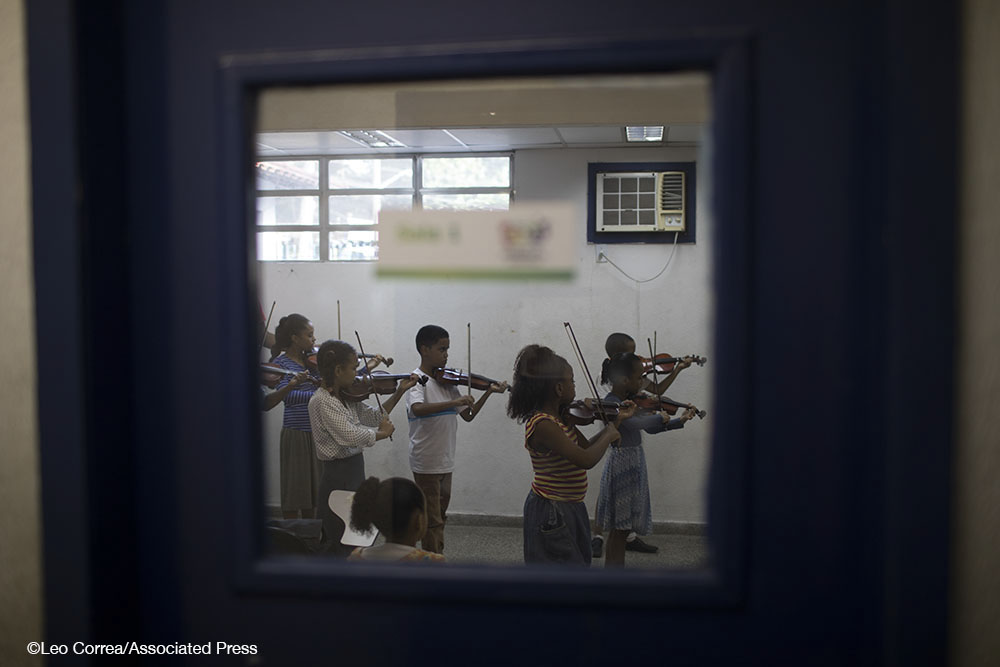
In this June 7, 2017 photo, kids attend a violin class in the City of God slum in Rio de Janeiro, Brazil. Even used to the violence, the children participating in the social projects, see with enthusiasm that the music, sports, arts could mean a change on their future. (AP Photo/Leo Correa)
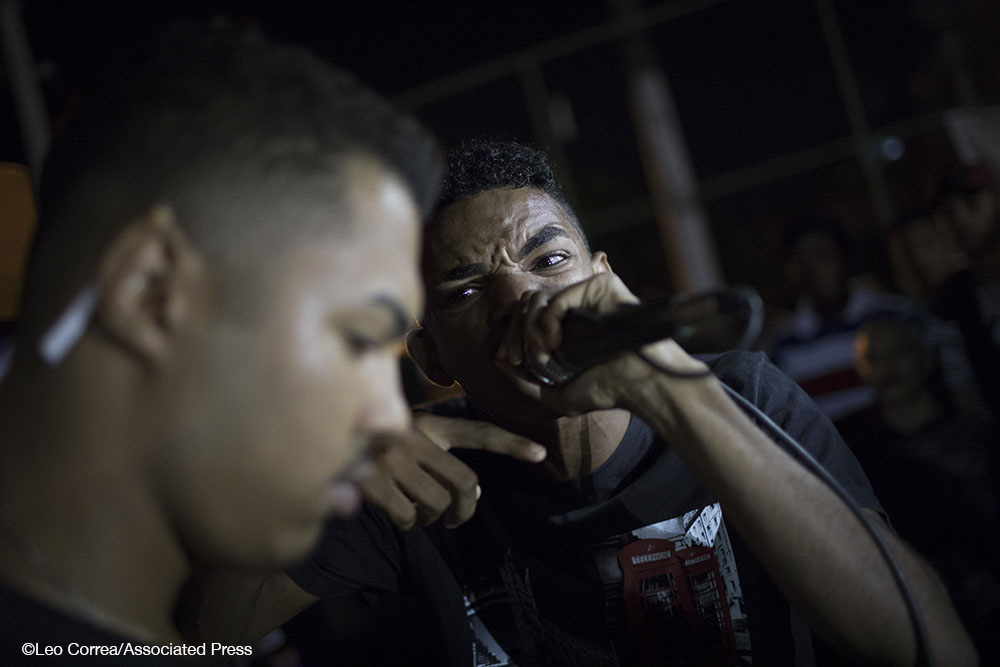
In this June 8, 2017 photo, two artists face each other in a rap battle in the City of God slum in Rio de Janeiro, Brazil. The night was a moment to release the feelings at a poorly illuminated square, inside the favela where the youth gathered to perform their poems and participates in a night of RAP battles. (AP Photo/Leo Correa)
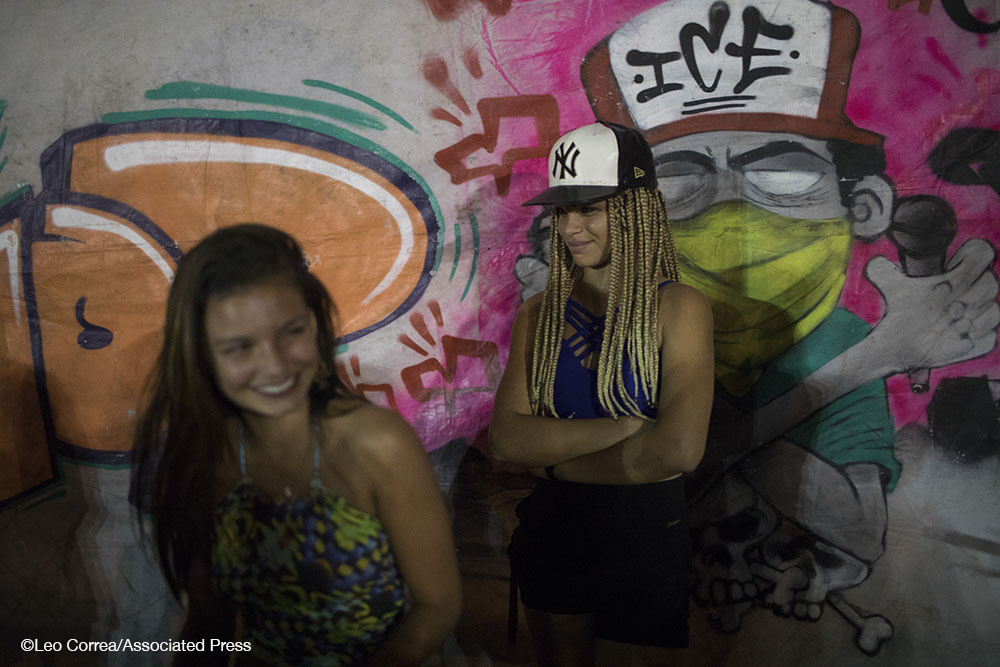
In this June 8, 2017 photo, two girls attend a night session of rap in the City of God slum in Rio de Janeiro, Brazil. The night was a moment to release the feelings of thse people that were in the RAP battle though, due to the increase of the violence in the slums, there is a sensation that something could suddenly finish the party. “It is a war that is happening here (…) Cidade de Deus is like a small Siria and there is a imminent risk of death”, says Lucas dos Santos da Cruz, 18, that promotes the event.

In this June 6, 2017 photo, houses are seen lighted by artificial light during the dusk in the City of God slum in Rio de Janeiro, Brazil. Favelas can be perceived in a complex weft that mix deep roots of social inequality and vulnerability. Both aspects related to the domain of armed criminals groups, the police - that is frequently not seen as friendly alternative - and the confrontation between them that creates a hostile environment. In the other hand, poor education, early pregnancy, low incomes, malnourishment and over exposure to violence raise even more the inequalities. (AP Photo/Leo Correa)
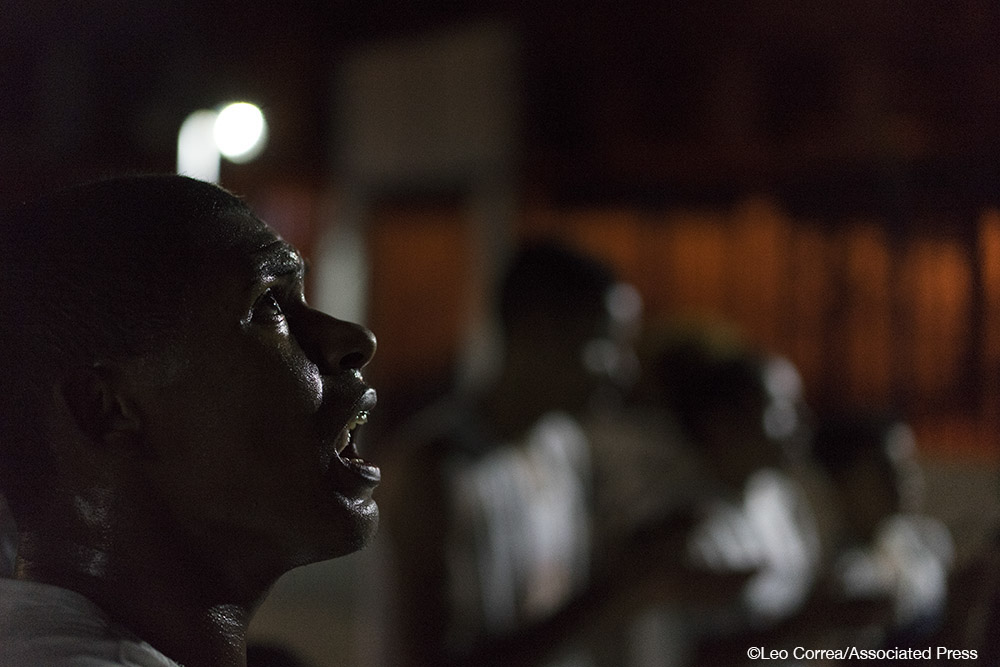
In this June 5, 2017 photo, Mike Leonardo de Jesus da Silva, 24, sings as he attends a copeira class in the City of God slum in Rio de Janeiro, Brazil. From the roots of social-historical construction, a popular Brazilian martial art Capoeira - art form inherited from African slavery in Brazil- is another example of resistance of a fighting to give an alternative for the boys and girls of the slum. (AP Photo/Leo Correa)
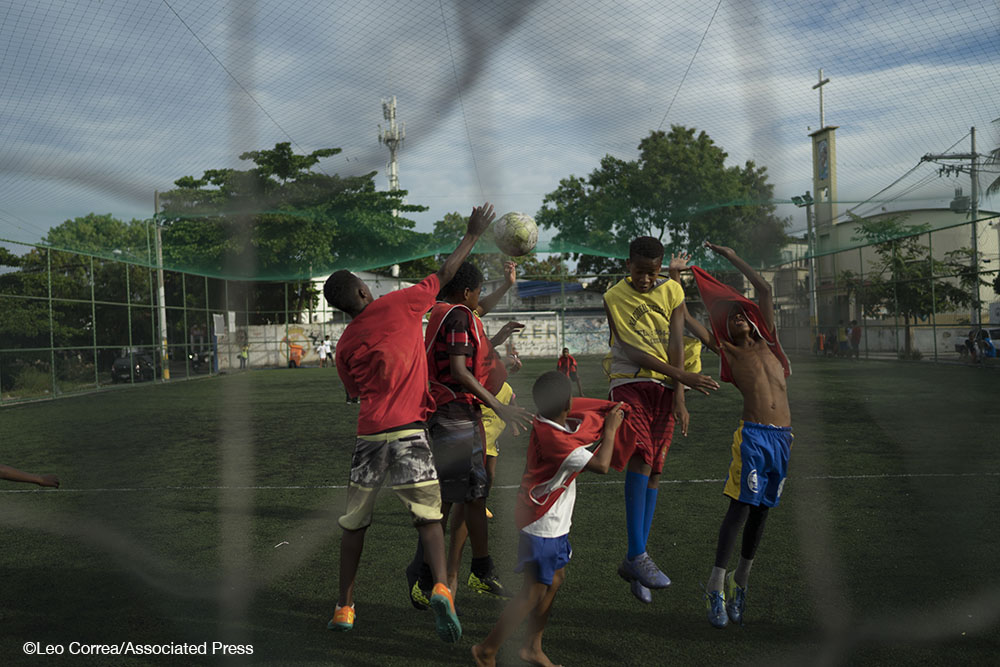
In this June 5, 2017 photo, kids jumps for a header during a soccer practice in the City of God slum in Rio de Janeiro, Brazil. Even used to the violence, the children participating in the social projects, see with enthusiasm that the music, sports, arts could mean a change on their future. (AP Photo/Leo Correa)
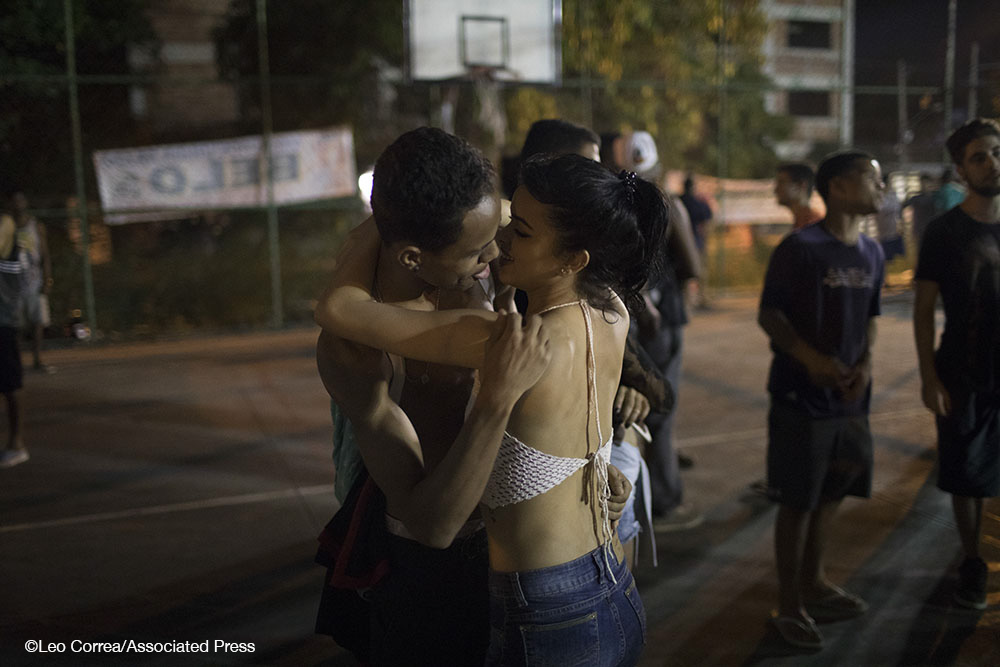
In this June 8, 2017 photo, a couple kisses as they attend a night session of rap in the City of God slum in Rio de Janeiro, Brazil. The night was a moment to release the feelings of thse people that were in the RAP battle though, due to the increase of the violence in the slums, there is a sensation that something could suddenly finish the party. “It is a war that is happening here (…) Cidade de Deus is like a small Siria and there is a imminent risk of death”, says Lucas dos Santos da Cruz, 18, that promotes the event.
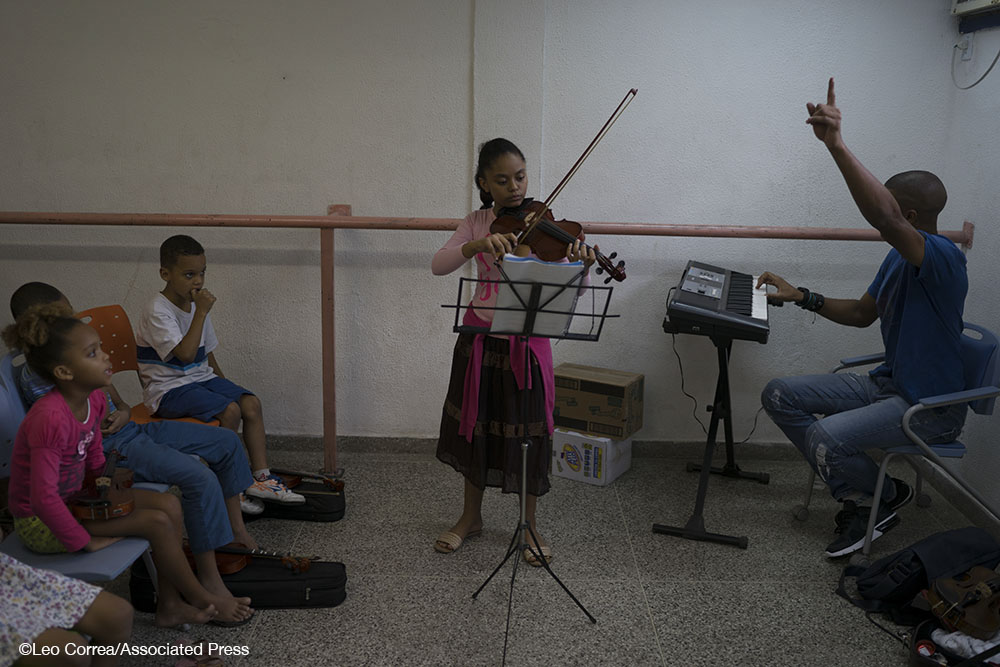
In this June 5, 2017 photo, Isabela, 10, plays the violin during a class in the City of God slum in Rio de Janeiro, Brazil. "I am used to the shootings here, I hear them since I was a kid”, says the young violin student, who dreams to become a professional musician. “Music calms me down”, says Isabela. (AP Photo/Leo Correa)
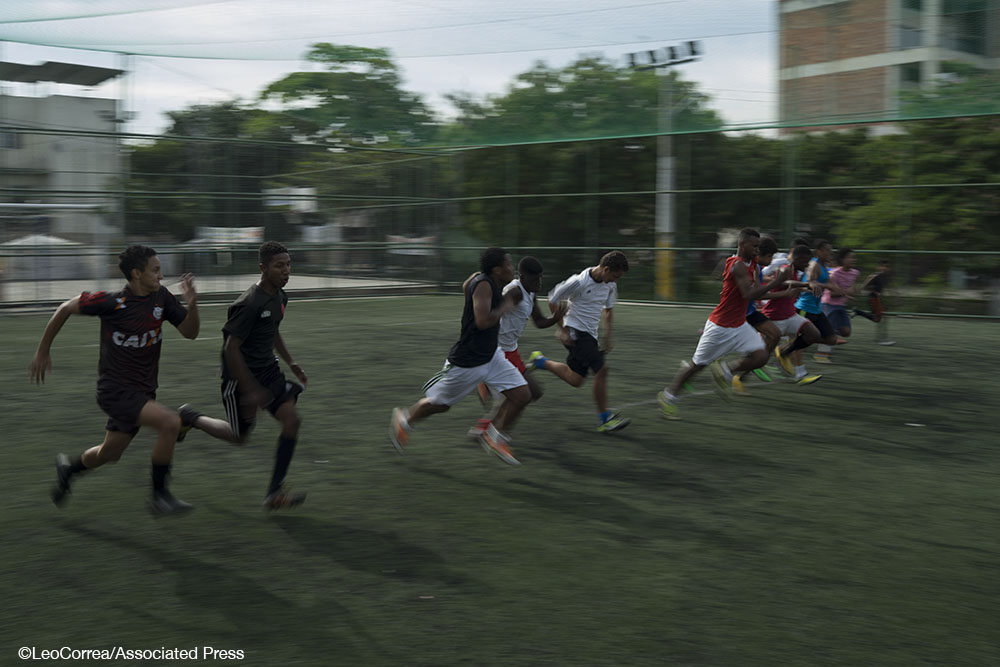
In this June 5, 2017 photo, youth exercise during a soccer practice in the City of God slum in Rio de Janeiro, Brazil. Even used to the violence, the children participating in the social projects, see with enthusiasm that the music, sports, arts could mean a change on their future. (AP Photo/Leo Correa)
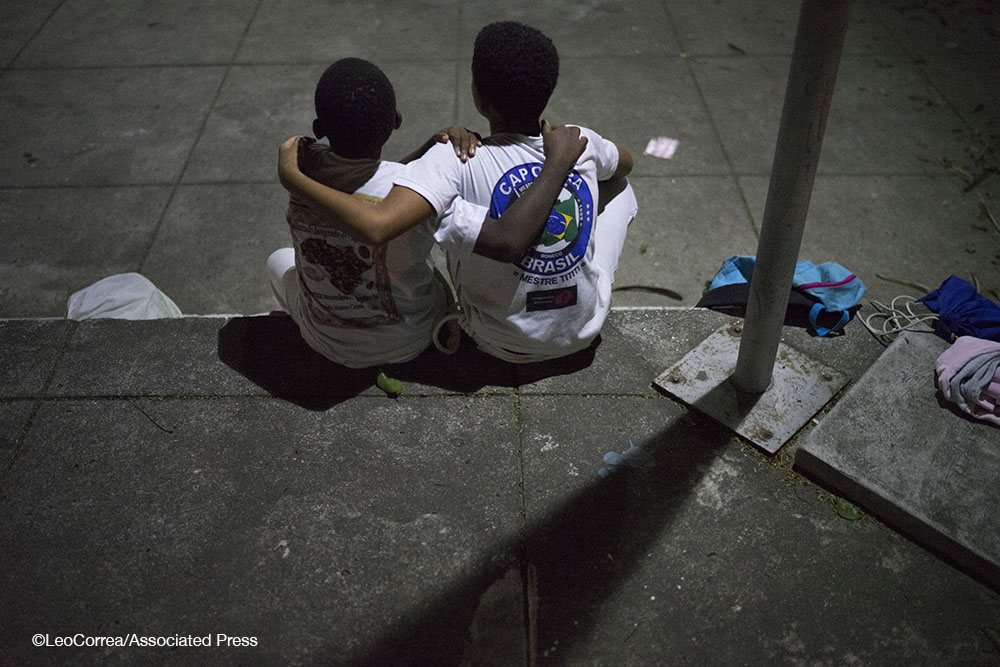
In this June 5, 2017 photo, two kids stay holding each other, as a punishment, because they had an argue during a copeira class in the City of God slum in Rio de Janeiro, Brazil. After stopped the class to alert the kids about avoid wrongdoing and the value of the discipline for their lives, Fabiano da Silva said: “Today we don’t want to form a teacher or master of Capoeira. The work here is to form a citizen” (AP Photo/Leo Correa)
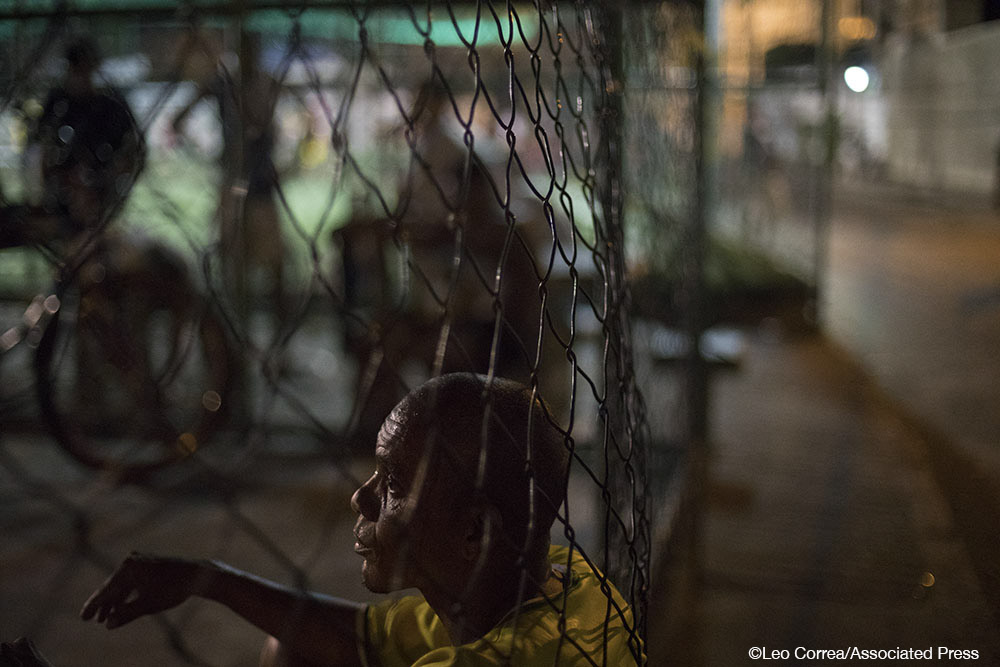
In this June 6, 2017 photo, Robson Luiz de Mendonca, 46, the MC Mingau takes a breath after he played basketball in the City of God slum in Rio de Janeiro, Brazil. "After 45 years it was just promises, residents of CDD are in a hurry, in a hurry for identity, in a hurry for dignity, in a hurry for true action, but they (the government) don’t do nothing, we need those things”, says MC Mingau. (AP Photo/Leo Correa)
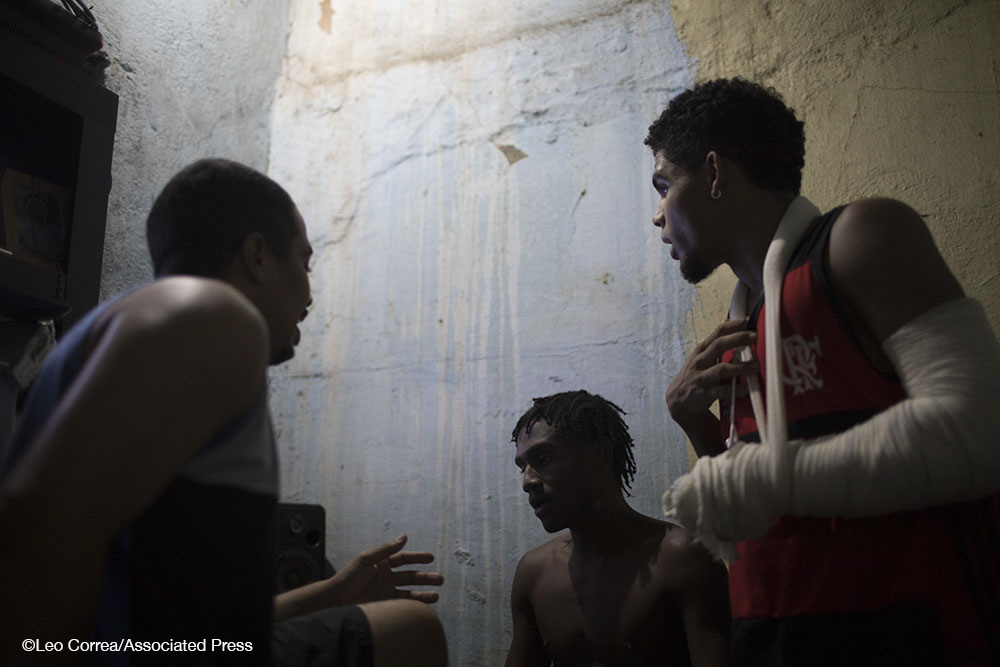
In this June 8, 2017 photo, Lucas dos Santos da Cruz, 18, center, gather with his friends as they talk about about the night session of Rap battle in the City of God slum in Rio de Janeiro, Brazil. When Cruz realized that he was in the middle of a urban conflict, he started to work and perform in rounds of poetry and music with his friends. (AP Photo/Leo Correa)

In this June 9, 2017 photo, Isabela, 10, right, plays the violin as her mother looks on in their house in the City of God slum in Rio de Janeiro, Brazil. "I am used to the shootings here, I hear them since I was a kid”, says the young violin student, who dreams to become a professional musician. “Music calms me down”, says Isabela. (AP Photo/Leo Correa)
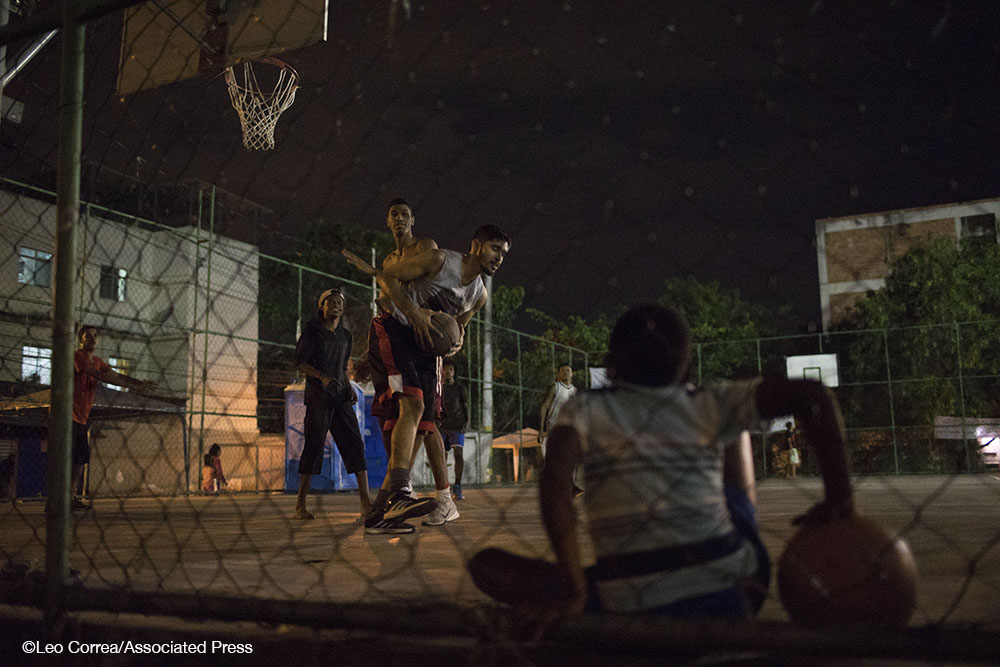
In this June 6, 2017 photo, youth play basketball in the City of God slum in Rio de Janeiro, Brazil. The cultural movements organized by residents work as a resistance to face many problems in areas where there is a lack of services, from basic public services like sanitation to health units and, where the government security is based in a military intervention model. (AP Photo/Leo Correa)

In this June 9, 2017 photo, the artist Anayde dos Santos Muniz, 84, well known as Tuca poses for the picture in her small house surrounded by her naif paintings in the City of God slum in Rio de Janeiro, Brazil. I don’t exchange the Cidade de Deus for nowhere. Because I came from the suffering, I came from the mud. Today I am on the top, I got better”, says Tuca who dreams to be recognized as a professional songwriter. (AP Photo/Leo Correa)
















